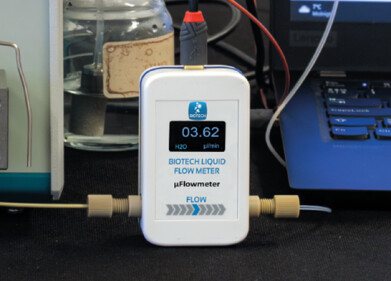HPLC, UHPLC
How is HPLC Used for Medical Purposes?
Jan 21 2022
HPLC (high-performance liquid chromatography) is arguably best know for its use with pharmaceuticals. The technique is used to analyse drugs and medicines for their purity, to maintain the highest standards for pharmaceutical products – with the end goal of helping patients with medical issues.
However, that’s not its only purpose in the medical domain. HPLC can also be used for both research and diagnosis, as this post will explore.
HPLC and medical research
When researching specific diseases and disorders, scientists will often take biological samples from existing sufferers for analysis. Why? By analysing those samples, they can look for anything out of the ordinary, which could be an indicator of the disease in other patients.
As an example, the HbA1c glycated haemoglobin has become a reliable biomarker for the diagnosis of diabetes thanks to such analyses. HPLC is one of the methods that can be used in this respect, separating components within a substance such as blood.
By identifying and quantifying these components, researchers can potentially find clearer biomarkers for diseases which allow for earlier diagnosis and intervention for future patients.
It can even be used to distinguish between similar diseases for a more accurate diagnosis. In 2011, a team at Tokyo Medical University used HPLC/MS to identify a pre-therapeutic distinction between large cell neuroendocrine carcinoma (LCNEC) and small cell lung carcinoma (SCLC). They identified four protein candidates that were preferentially expressed in LCNEC compared to SCLC, providing a basis for distinction going forward.
Using that for diagnosis
Not a million miles away is the use of HPLC for medical diagnosis. When biomarkers have been identified, the next task is to check for them in blood and other medical samples from undiagnosed patients. The main difference here is that researchers know what they’re looking for – thanks to the kind of analyses mentioned above.
While it may be more expensive than alternative methods, HPLC is renowned for its precision, and the ability to identify more complex biomarkers. One example of this comes from vitamin D, which isn’t measured directly, but instead through the concentration of a metabolite made in the liver – 5-hydroxyvitamin D [25(OH)D] – linked to vitamin D production.
Both HPLC and HILIC are used to check for metabolites produced in the body, with HPLC the preferred method for vitamin D analysis. As you might expect, HPLC is also one of the methods which can be used to test for the aforementioned HbA1c haemoglobin, along with immunoassay and enzymatic assays.
To find out more about advances with HPLC instrumentation, check out the article ‘Experience and Applications of a New Portable HPLC Machine’.
Digital Edition
Chromatography Today - Buyers' Guide 2022
October 2023
In This Edition Modern & Practical Applications - Accelerating ADC Development with Mass Spectrometry - Implementing High-Resolution Ion Mobility into Peptide Mapping Workflows Chromatogr...
View all digital editions
Events
ACS National Meeting - Fall 2024
Aug 18 2024 Denver, CO, USA
Sep 04 2024 Chiba, Tokyo, Japan
Sep 04 2024 University of Warwick, Coventry, UK
Sep 10 2024 Rockville, MD, USA
Plastics Recycling World Expo Europe
Sep 11 2024 Brussels, Belgium














